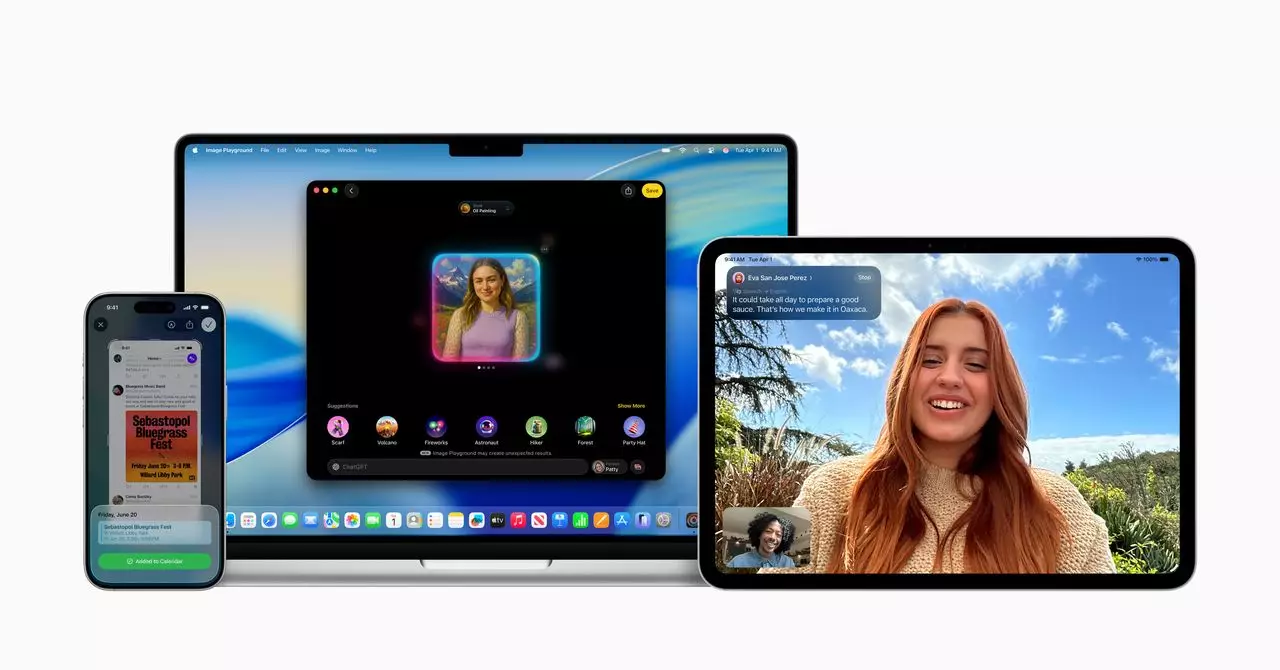Apple has long been synonymous with innovation, yet its approach to artificial intelligence (AI) has been cautious compared to competitors like Google and OpenAI. At the recent Worldwide Developers Conference (WWDC), Apple unveiled new features designed to integrate AI more seamlessly into its ecosystem, spanning the iPhone, Mac, and Apple Watch. While these developments signal Apple’s commitment to advancing its AI capabilities, they also hint at a persistent tension between maintaining its brand identity and confronting the rapid evolution of technology.
Among the standout announcements was the Foundation Models framework, a strategic move that opens doors for developers to leverage Apple’s AI models in their applications. This initiative represents a significant pivot, as Apple traditionally maintained a more insular environment for its developer community. By allowing access to its AI resources, Apple aims to nurture creativity and enhance functionality across its devices, marking a decisive move toward a more collaborative tech ecosystem.
Transforming Communication with Live Translation
One of the highlight features revealed was Live Translation, which enables real-time translation during phone and FaceTime calls across multiple languages. This feature does more than just translate words; it embodies a deeper connection among users globally, breaking down language barriers. In a world increasingly defined by remote communication, tools that facilitate understanding are more important than ever. Apple’s introduction of this feature suggests a recognition of its responsibility to enhance user communication in an interconnected world.
Moreover, the demonstration of Workout Buddy showcased another facet of AI that resonates on a personal level. An engaging AI voice assistant designed to accompany users during their workouts, it provides encouragement and updates tailored to personal goals. Its empathetic design underscores the shift towards a more human-centric AI, echoing an important trend in technology: the drive to enhance user experience by making it more interactive and personalized.
Visual Intelligence and Creativity Reimagined
The upgrades to Visual Intelligence further illuminate Apple’s vision. By expanding AI capabilities to analyze images not just in real-time but also from screenshots, Apple is pushing the boundaries of creativity and functionality. The ability to identify products or summarize web content through a camera lens could redefine how users interact with information. This pivot toward maximizing visual data could inspire a new generation of applications, showcasing the potential of AI in everyday user interactions.
Additionally, the updates to tools like Genmoji and Image Playground underscore an emphasis on creativity. In a marketplace saturated with generic image editing software, Apple’s commitment to stylish and unique outputs sets it apart. This not only caters to individual users wanting customizable experiences but also speaks to a broader cultural movement wherein personal expression is facilitated through technology.
Balancing Progress with User Loyalty
Despite these intriguing advancements, doubts linger regarding Apple’s position in the AI race. Incremental improvements, while advantageous for current users, may not generate excitement in a rapidly evolving landscape where competitors are making bold strides. Analysts like Paolo Pescatore underscore the delicate balance Apple must strike: integrating cutting-edge AI features without alienating its loyal customer base. The company’s cautious approach is a double-edged sword; it must innovate swiftly enough to compete while maintaining the quality and reliability that customers expect.
On the other hand, the drive to engage developers with accessible AI tools could catalyze a new wave of innovation on the Apple platform. Francisco Jeronimo from IDC points out that by providing developers access to AI models, Apple is aligning itself closer to competitors who have already set benchmarks in this space. This initiative is critical, as it could spark a transformation in how third-party applications utilize AI, ultimately enriching the Apple user experience.
Navigating a Competitive Landscape
Although Apple’s AI models are not yet regarded at the same level as those from OpenAI or Google, their capacity for local operation stands out. Running on personal devices without the need for a continuous network connection offers a unique combination of convenience and privacy. The integration of Private Cloud Compute for security further highlights Apple’s commitment to protecting user data, a crucial aspect in today’s data-driven world.
Yet, as we see Google and OpenAI push toward more innovative AI solutions that include real-time interactions and environmental awareness, Apple faces a challenge to accelerate its own advancements. The tech landscape is undeniably competitive, and the emphasis is shifting towards a more dynamic integration of AI into everyday tools and devices.
As Apple continues its journey into the world of AI, the path it chooses will not only shape its future but also the broader landscape of technology as a whole.

